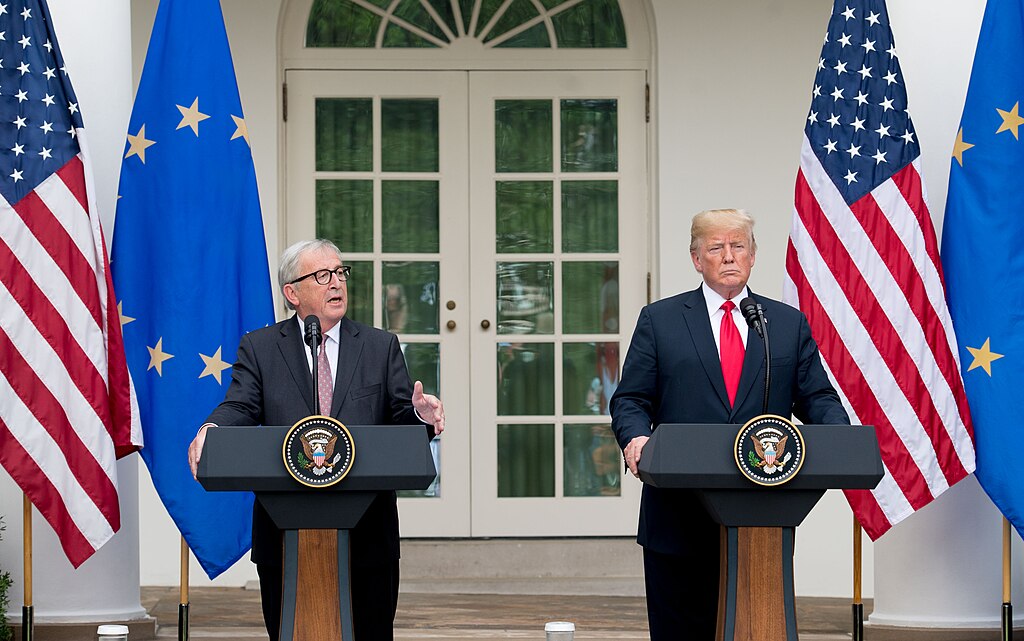As Vice President Kamala Harris accepted the Democratic nomination for president at the 2024 Democratic National Convention in Chicago on August 22, she offered a stark critique of her Republican opponent, Donald Trump. While highlighting the grave consequences of a second Trump term, Harris labeled the former president as “an unserious man” but warned of the serious dangers his return to the White House would pose.
This characterization of Trump as both unserious and dangerous has resonated across the political spectrum, including among some of his conservative critics. Bill Kristol, a prominent "Never Trump" conservative and supporter of Harris, delved into this duality in an August 26 column for The Bulwark, where he echoed Harris’s sentiments.
Kristol argues that Trump’s persona—often dismissed as mere buffoonery or showmanship—serves as a façade that obscures the genuine threat his leadership poses. According to Kristol, it is precisely Trump’s unseriousness that allows many to underestimate the dangers of his political influence. He suggests that this perception of Trump as a mere entertainer can make it difficult for the public to fully grasp the gravity of what a second Trump presidency could mean for the country.
Harris’s decision to briefly address Trump’s unseriousness, Kristol notes, was a strategic move. By acknowledging Trump’s clownish behavior, Harris aimed to pivot the conversation towards the more significant issue: the potential consequences of his policies and the movement he leads. Kristol agrees with this approach, emphasizing that Trump’s antics should not distract from the real danger posed by the MAGA movement—a political force that extends beyond Trump himself.
In his analysis, Kristol references veteran Democratic strategist James Carville, who has advised Democrats to focus their campaign efforts on attacking the broader MAGA movement rather than Trump individually. Carville’s reasoning is that while Trump has a loyal base, the extremist elements of Trumpism are less palatable to the general electorate. Kristol concurs, suggesting that the public is more wary of the radical agenda espoused by Trump’s followers than of Trump as a person.
Kristol points to recent polling and public reactions to initiatives like Heritage Foundation’s Project 2025, which outlines a far-right agenda for a potential Trump administration. The response to such proposals, he argues, indicates that the American public is increasingly alarmed by the prospect of Trumpism, even if they are not as personally repelled by Trump himself.
However, Kristol cautions that while Harris can highlight these dangers, much of the responsibility for opposing Trumpism will fall to others—politicians, activists, and voters alike. He contends that while Harris must focus on presenting herself as a capable leader, the broader anti-Trump coalition must work diligently to expose and combat the extremist ideologies that underpin the MAGA movement.
In the coming months, as the 2024 election campaign intensifies, Kristol’s warning serves as a reminder that Trump’s antics, however entertaining or absurd they may seem, should not distract from the serious threats posed by the movement he leads.



 Trump Signals Progress in Ukraine Peace Talks Ahead of U.S.–Russia Meeting
Trump Signals Progress in Ukraine Peace Talks Ahead of U.S.–Russia Meeting  EU Delays Mercosur Free Trade Agreement Signing Amid Ukraine War Funding Talks
EU Delays Mercosur Free Trade Agreement Signing Amid Ukraine War Funding Talks  Federal Appeals Court Allows Trump’s National Guard Deployment in Washington, D.C. to Continue
Federal Appeals Court Allows Trump’s National Guard Deployment in Washington, D.C. to Continue  Barham Salih Elected as Next UN High Commissioner for Refugees
Barham Salih Elected as Next UN High Commissioner for Refugees  U.S. Initiates $11.1 Billion Arms Sale to Taiwan Amid Rising China Tensions
U.S. Initiates $11.1 Billion Arms Sale to Taiwan Amid Rising China Tensions  Trump Administration Reviews Nvidia H200 Chip Sales to China, Marking Major Shift in U.S. AI Export Policy
Trump Administration Reviews Nvidia H200 Chip Sales to China, Marking Major Shift in U.S. AI Export Policy  Fernando Haddad Confirms He Will Not Run for Office in 2025, Signals Possible Exit as Brazil’s Finance Minister
Fernando Haddad Confirms He Will Not Run for Office in 2025, Signals Possible Exit as Brazil’s Finance Minister  Italy Supreme Court Upholds Salvini Acquittal in Migrant Kidnapping Case
Italy Supreme Court Upholds Salvini Acquittal in Migrant Kidnapping Case  Trump Attends Dover Ceremony Honoring U.S. Personnel Killed in Syria
Trump Attends Dover Ceremony Honoring U.S. Personnel Killed in Syria  Jared Isaacman Confirmed as NASA Administrator, Becomes 15th Leader of U.S. Space Agency
Jared Isaacman Confirmed as NASA Administrator, Becomes 15th Leader of U.S. Space Agency  Trump Announces $1,776 Cash Bonus for U.S. Military Personnel Ahead of Christmas
Trump Announces $1,776 Cash Bonus for U.S. Military Personnel Ahead of Christmas  Canada Signals Delay in US Tariff Deal as Talks Shift to USMCA Review
Canada Signals Delay in US Tariff Deal as Talks Shift to USMCA Review  Argentina Unions Rally Against Milei’s Labor Reform as Congress Debates Key Bill
Argentina Unions Rally Against Milei’s Labor Reform as Congress Debates Key Bill  Putin Signals Possible Peace or Continued War in Ukraine at Major Year-End Address
Putin Signals Possible Peace or Continued War in Ukraine at Major Year-End Address  Honduras Election Recount Delayed Amid Protests and Political Tensions
Honduras Election Recount Delayed Amid Protests and Political Tensions  U.S. and China Push for Ceasefire as Thailand–Cambodia Border Clashes Escalate
U.S. and China Push for Ceasefire as Thailand–Cambodia Border Clashes Escalate  U.S. House Advances GOP Healthcare Bill as ACA Subsidies Near Expiration
U.S. House Advances GOP Healthcare Bill as ACA Subsidies Near Expiration 































